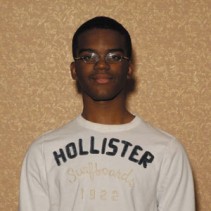Reflection on Cultural Leadership: Jonah Atchison
Published October 10, 2012
Since joining Cultural Leadership in the beginning of this year, I have learned about the Jewish culture. I threw away all my preconceived notions because I needed to be open to new information. I immediately noticed the similarities between Christianity and Judaism. We share the same basic principles and, most importantly, we both believe in God. Fueled by what we have in common, I began my quest to find out more.
I most admire the unity that is expressed in Jewish culture. When I attended synagogue with my fellow Class 8 students, I felt surrounded by family and fellowship even amidst a sea of strangers. It was so welcoming. People actually spoke to me, shook my hand, and smiled. It was a very pleasant atmosphere. The singing and reading in Hebrew was my favorite part. It all seemed so musical, even the spoken parts, and it made me actually want to try and learn Hebrew just so I could join in next time. But the part that stood out to me was that everyone was in unison.
At Christian churches, there isn’t much that is said as one body, one church. We may speak our church covenant together but it isn’t the same as the devout attention I felt given to God when we’re all reading the same words, in an ancient language, that everyone knows. It’s fascinating to me.
My participation in Cultural Leadership revealed another eye-opener—African-Americans in the U.S. and Jews in Europe were treated similarly. The hatred felt by the dominant group in each country toward the minority was the same. I asked myself a question, “What if the United States did not have a Civil Rights Movement? What if that hatred had kept building and something similar to the Holocaust occurred in the U.S.?” The realization of how close we came to an American Holocaust troubles me. Cultural Leadership has caused me to ask some thought-provoking questions this year.
I am proud to say that in America, Jews and African-Americans worked together during the Civil Rights Movement. Jewish people were some of our staunchest allies at the time. In the famous 1964 Mississippi murder case that sparked the movie “Mississippi Burning,” three civil rights activists were killed by the Ku Klux Klan. Two activists were Jewish and the other was African-American. One of Martin Luther King’s biggest supporters during the Civil Rights Movement was Rabbi Abraham Joshua Heschel. The two minorities shared a special camaraderie. Without Cultural Leadership, I would not have been aware of how much I have in common with my fellow Jewish brothers.
The most emotional experience I had on our three-week transformational journey last summer was learning what truly happened during the Holocaust. I always believed that I knew the history of the Holocaust pretty well, but I was proven wrong when we visited the United States Holocaust Memorial Museum in Washington, D.C. I was speechless and it was there that I learned textbooks can only teach you so much. I learned to view Holocaust victims as people, not statistics. Twelve million lives vs. 12 million souls—all with their own individual goals, hopes and dreams. It made all the difference to me. The horrors committed by the Nazis shocked me to the core. The museum held nothing back. The exhibits were explicit and showed pictures of graphic torture and mutilation. After visiting the museum, it would be hard to not feel some type of emotion. Even though I do not know the pain Jewish people went through, I can empathize.
After everything I have learned in Cultural Leadership, I am left with a yearning to bring people from all different backgrounds together. The first step to bridging understanding is to get the people together. I am really excited about what Cultural Leadership has done in my life and the changes I hope to make. Learning about the Jewish experience helped shape and mold me, and without it, I would still be culturally blind.















